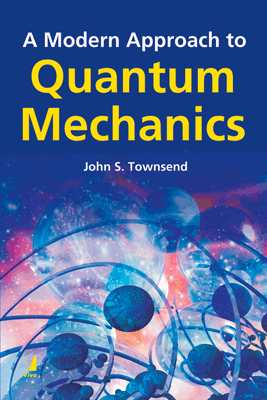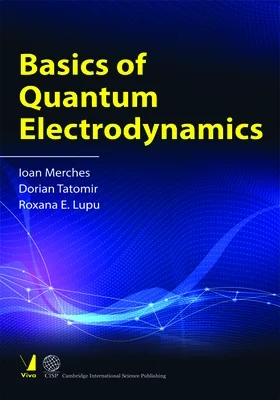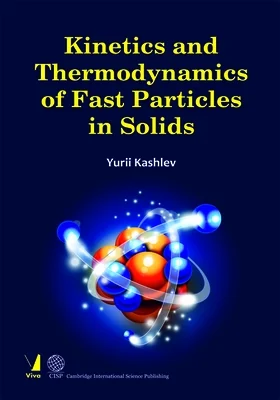A Modern Approach to Quantum Mechanics
A Modern Approach to Quantum Mechanics
₹895.50 ₹995.00 Save: ₹99.50 (10%)
Go to cartISBN: 9788130913148
Bind: Paperback
Year: 2020
Pages: 500
Size: 153 x 229 mm
Publisher: University Science Books
Published in India by: Viva Books
Exclusive Distributors: Viva Books
Sales Territory: India, Nepal, Pakistan, Bangladesh, Sri Lanka
Description:
"Townsend is the best book I know for advanced undergraduate quantum mechanics. It is clear, contemporary, and compact. My students used it as a wonderful springboard to graduate school."
—Ralph D. Amado, University of Pennsylvania
"The best aspect of this book is its consistently sound pedagogy. The point is that Townsend is not showing off, not being fussy or pedantic. He has recognized a potential confusion and neatly headed it off. The book is full of such smart, sensitive teaching."
—Richard Hazeltine, University of Texas, Austin
"This is an excellent book for a course on advanced undergraduate quantum mechanics. it is refreshing in its approach for both the student and teacher, and it leaves the student well-positioned to continue their training in advanced physics."
—Randy Hulet, Rice University
Inspired by Richard Feynman and J.J. Sakurai, A Modern Approach to Quantum Mechanics lets professors expose their undergraduates to the excitement and insight of Feynman's approach to quantum mechanics while simultaneously giving them a textbook that is well-ordered, logical, and pedagogically sound. This book covers all the topics that are typically presented in a standard upper- level course in quantum mechanics, but its teaching approach is new: Rather than organizing his book according to the historical development of the field and jumping into a mathematical discussion of wave mechanics, Townsend begins his book with the quantum mechanics of spin. Thus, the first five chapters of the book succeed in laying out the fundamentals of quantum mechanics with little or no wave mechanics, so the physics is not obscured by mathematics. Starting with spin systems gives students something new and interesting while providing elegant but straightforward examples of the essential structure of quantum mechanics. When wave mechanics is introduced later, students perceive it correctly as only one aspect of quantum mechanics and not the core of the subject. Praised for its pedagogical brilliance, clear writing, and careful explanations, this book is destined to become a landmark text.
Target Audience:
Students and academics of physics.
Contents:
Preface • Stern-Gerlach Experiments: The Original Stern-Gerlach Experiment • Four Experiments • The Quantum State Vector • Analysis of Experiment 3 • Experiment 5 • Summary • Rotation of Basis States and Matrix Mechanics: The Beginnings of Matrix Mechanics • Rotation Operators • The Identity and Projection Operators • Matrix Representations of Operators • Changing Representations • Expectation Values • Photon Polarization and the Spin of the Photon • Summary • Angular Momentum: Rotations Do Not Commute and Neither Do the Generators • Commuting Operators • The Eigenvalues and Eigenstates of Angular Momentum • The Matrix Elements of the Raising and Lowering Operators • Uncertainty Relations and Angular Momentum • The Spin-1/2 Eigenvalue Problem • A Stern-Gerlach Experiment with Spin-1 Particles • Summary • 4 Time Evolution: The Hamiltonian and the Schrodinger Equation • Time Dependence of Expectation Values • Precession of a Spin-1/2 Particle in a Magnetic Field • Magnetic Resonance • The Ammonia Molecule and the Ammonia Maser • The Energy-Time Uncertainty Relation • Summary • A System of Two Spin-1/2 Particles: The Basis States for a System of Two Spin- 1/2 Particles • The Hyperfine Splitting of the Ground State of Hydrogen • The Addition of Angular Momenta for Two Spin-1/2 Particles • The Einstein-Podolsky-Rosen Paradox • A Nonquantum Model and the Bell Inequalities • Summary • Wave Mechanics in One Dimension: Position Eigenstates and the Wave Function • The Translation Operator • The Generator of Translations • The Momentum Operator in the Position Basis • Momentum Space • A Gaussian Wave Packet • The Heisenberg Uncertainty Principle • General Properties of Solutions to the Schrodinger Equation in Position Space • The Particle in a Box • Scattering in One Dimension • Summary • The One-Dimensional Harmonic Oscillator: The Importance of the Harmonic Oscillator • Operator Methods • An Example: Torsional Oscillations of the Ethylene Molecule • Matrix Elements of the Raising and Lowering Operators • Position-Space Wave Functions • The Zero-Point Energy • The Classical Limit • Time Dependence • Solving the Schrodinger Equation in Position Space • Inversion Symmetry and the Parity Operator • Summary • Path Integrals: The Multislit, Multiscreen Experiment?? The Transition Amplitude • Evaluating the Transition Amplitude for Short Time Intervals • The Path Integral • Evaluation of the Path Integral for a Free Particle • Why Some Particles Follow the Path of Least Action • Quantum Interference Due to Gravity • Summary • Translational and Rotational Symmetry in the Two-Body Problem: The Elements of Wave Mechanics in Three Dimensions. Translational Invariance and Conservation of Linear Momentum • Relative and Center-of-Mass Coordinates • Estimating Ground-State Energies Using the Uncertainty Principle • Rotational Invariance and Conservation of Angular Momentum • A Complete Set of Commuting Observables • Vibrations and Rotations of a Diatomic Molecule • Position-Space Representations of L in Spherical Coordinates • Orbital Angular Momentum Eigenfunctions • Summary • Bound States of Central Potentials: The Behavior of the Radial Wave Function Near the Origin • The Coulomb Potential and the Hydrogen Atom • The Finite Spherical Well and the Deuteron • The Infinite Spherical Well • The Three-Dimensional Isotropic Harmonic Oscillator • Conclusion • Time-Independent Perturbations: Nondegenerate Perturbation Theory • An Example Involving the One-Dimensional Harmonic Oscillator • Degenerate Perturbation Theory • The Stark Effect in Hydrogen • The Ammonia Molecule in an External Electric Field Revisited • Relativistic Perturbations to the Hydrogen Atom • The Energy Levels of Hydrogen, Including Fine Structure, the Lamb Shift, and Hyperfine Splitting • The Zeeman Effect in Hydrogen • Summary • Identical Particles: Indistinguishable Particles in Quantum Mechanics • The Helium Atom • Multielectron Atoms and the Periodic Table • Covalent Bonding • Conclusion • Scattering: The Asymptotic Wave Function and the Differential Cross Section • The Born Approximation • An Example of the Born Approximation: The Yukawa Potential • The Partial Wave Expansion • Examples of Phase-Shift Analysis • Summary • Photons and Atoms: The Aharonov-Bohm Effect • The Hamiltonian for the Electromagnetic Field • Quantizing the Radiation Field • The Properties of Photons • The Hamiltonian of the Atom and the Electromagnetic Field • Time-Dependent Perturbation Theory • Fermi's Golden Rule • Spontaneous Emission • Higher-Order Processes and Feynman Diagrams • Appendixes: A Electromagnetic Units B The Addition of Angular Momenta C Dirac Delta Functions D Gaussian Integrals E The Lagrangian for a Charge q in a Magnetic Field F Values of Physical Constants G Answers to Selected Problems • Index
About the Author:
John S. Townsend is the Susan and Bruce Worster Professor of Physics at Harvey Mudd College the science and engineering college of the Claremont Colleges. He has served as the chair of the physics department for two decades. He loves teaching physics, especially quantum physics. He has been a visiting professor at Caltech, the University of Southampton in England, Duke University and Swarthmore College In addition he was a Science Fellow at the Center for International Security and Arms Control at Stanford University.







